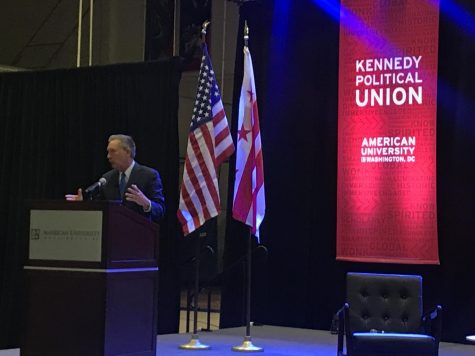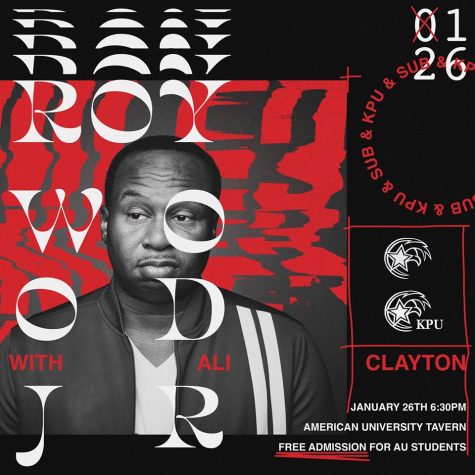AWOL Newswire Spring 2014
BEE TITLE
The AU Beekeeping Society is excited to install new bees in their apiary this spring after such a harsh winter. Honeybees haven’t just vanished from AU’s campus.
The Beeinformed Partnership, sponsored by the USDA and the National Institute of Food and Agriculture, reported that, on average, U.S. Beekeepers lost 45.1% of their colonies in the winter of 2012/2013. The issue raised by the honeybees’ disappearance isn’t just a lack of honey. According to National Geographic, the world is facing an unprecedented crisis of pollination, in which honeybees play a huge part.
The race to save honeybees, and the initiative to go green, have spurred on urban beekeeping in the nation’s capital, a movement that has taken flight here at American University. Founded in 2011, the AU Beekeeping Society is headed by faculty advisor Professor Eve Bratman of the School of International Service, and is currently based in MGC. The AU Beekeeping Society is one of several urban beekeeping communities in the DC area. George Washington University has an apiary and a bee lab, and the University of District Columbia just finished hosting an introductory beekeeping course sponsored by the Northern Virginia Beekeeping Consortium. SIS Senior Lauren Dryburgh, Vice President of the beekeeping society, relates that AU does not currently have much of a rapport with its counterpart beekeeping communities in the District, but upcoming events planned among the universities have the future buzzing with bright prospects.
At a general interest meeting, Professor Bratman compared the multitude of options in beekeeping technique and equipment to a “choose your own adventure.” With the honeybee’s future at stake, and the opportunity to practice urban beekeeping in a nationally recognized arboretum, the AU Beekeeping Society welcomes all “newbees” interested in or passionate about developing the skill of urban beekeeping. The AU Beekeeping Society offers a unique way to participate in the environmental initiative that not only cultivates a personal relationship with nature, but also presents the opportunity to draw a sweet reward.
TAX INCENTIVE TITLE
With the latest Captain America movie opening in theaters this Friday, Hollywood’s biggest rising star is thrust back into the spotlight: Washington, DC. If the trailers are any indication, our nation’s capitol will be a major backdrop in one of this year’s greatest superhero movies.
However very little of the movie’s filming was actually done here because the District’s lack of a film incentive fund. The city’s council tried to pass a bill that would renew the city’s film tax credit program, subsidizing film crews’ expenses in order to bring production jobs into the city, but it failed; comparatively Maryland increased its production budget for 2014 from $7.5 million to $25 million during this same time.
With more films and television shows taking place in DC than ever before, DC needs to act fast before this renaissance is over. No longer should the only jobs available to local filmmakers be production units filming exposition shots of the district’s historic landmarks while the rest of filming resumes elsewhere, usually in Baltimore, to fill in for the rest of the capitol. For example, last May the crew for the Captain America sequel filmed around Dupont Circle and the Theodore Roosevelt Bridge for aerial photography before moving to Cleveland to finish the big action sequence.
This is very similar to The Avengers when the massive climatic battle in New York City was actually shot against a green screen and the city was added in later by stitching together thousands of background images to recreate the Big Apple. If DC wants to prove to the world it is a city worth more than the transient suits which occupy it, it needs to stop being a supportive actor and become a leading role.
BOOK-O-MATIC
Japan has taught us anything can be put in a vending machine, from new or used underwear to fresh bread. What you might not know, is that book vending machines have existed since 1822. The first book vending machine was used to dispense inflammatory books (like Thomas Payne’s Age of Reason) and pamphlets so the vendor couldn’t be punished. While book vending machines have been built periodically and have become popular in Japan and China, they’ve failed to catch on in Western nations. An Irish company recently attempted to revamp the concept with their vending machine “A Novel Idea” but went bankrupt in 2010. Given the recent popularity of Redbox and other vending machines, the book vending machine might be the next big thing. –Meridian Ganz-Ratzat






